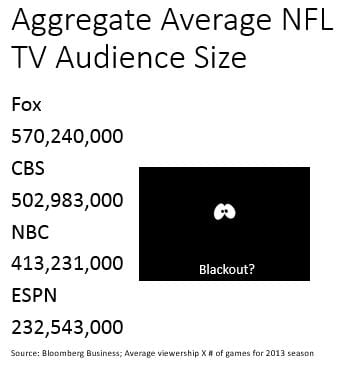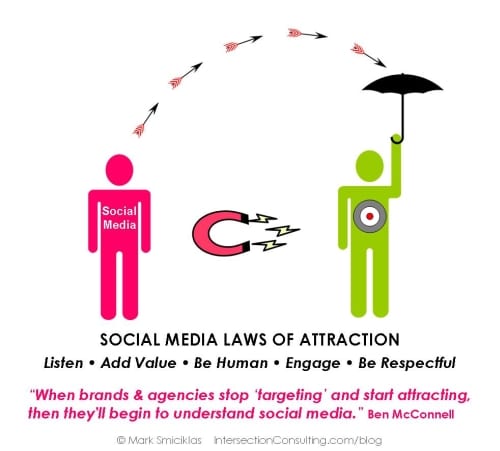by Eric Fernandez – March 2015
The NFL announced yesterday (3-23-15) that for 2015 they will lift the 30+ year blackout rule. The blackout rule has been in effect to “protect” season ticket holders. Teams that couldn’t technically sell out the game 72 hours before kick-off would have the game blacked out in their local markets. The change for 2015 is driven by two simple reasons:
- Pressure from the TV Networks, in particular CBS and FOX, to remove blackouts
- Teams no longer have an incentive to sell out games
#1. Pressure From TV Networks
The current TV agreements, that kicked in before the 2014 season, increase each teams annual TV money to between $200 – $220M. Or said another way, before each team plays a down, TV money pays for salary cap and team operating expenses and leaves each team $10+ million dollars in the black. That’s a nice business model – do nothing and make millions.
Make no mistake, TV drove this decision. Local market viewers are 50% – 75% of the local market TV rating.The NFL can’t justify crippling their largest revenue source, which is now the overwhelming majority to revenue for each team. Expect the TV viewing experience to innovate and improve as networks seek ways to recoup their investment.
#2. No Incentive to Sell Out
Read point #1, read it again and then read it a third time. This is no different than a pro athlete who ups his game in a contract year, makes a financial windfall, then gets a bit fat and happy with a large contract. Teams have no incentive to sell the last 10% of tickets. If anything you’ll see a shrinking of future stadiums with a model that’s focused purely on premium seating and season-tickets, sold well in advance on long-term contracts. We’ll witness the conversion of stadiums to “sound stages” with made-for-TV experiences.
As journalists are taught in J-School, the secret to uncovering a story’s truth is to “follow the money.” The same can be said for the NFL’s blackout lift.






















